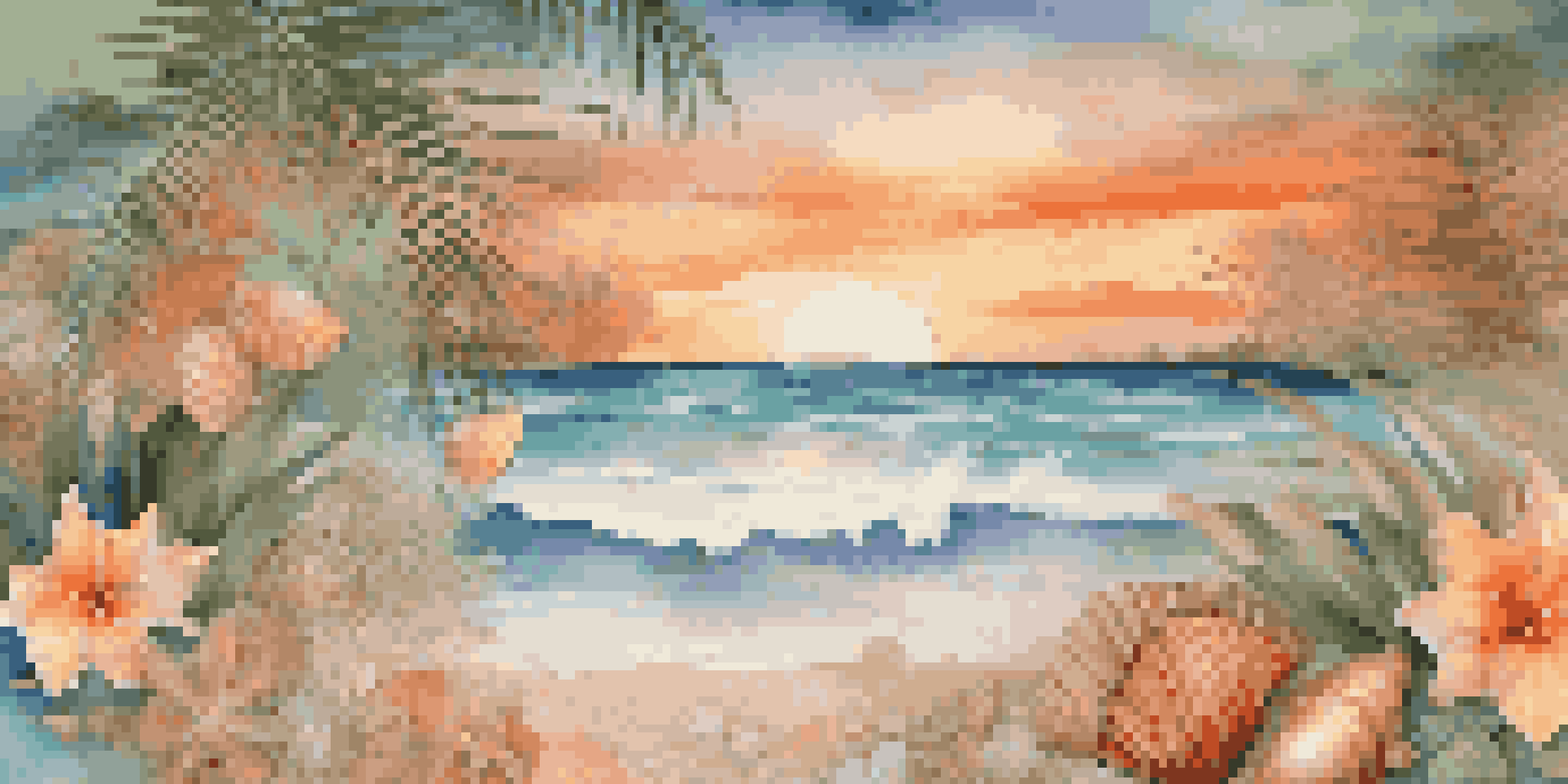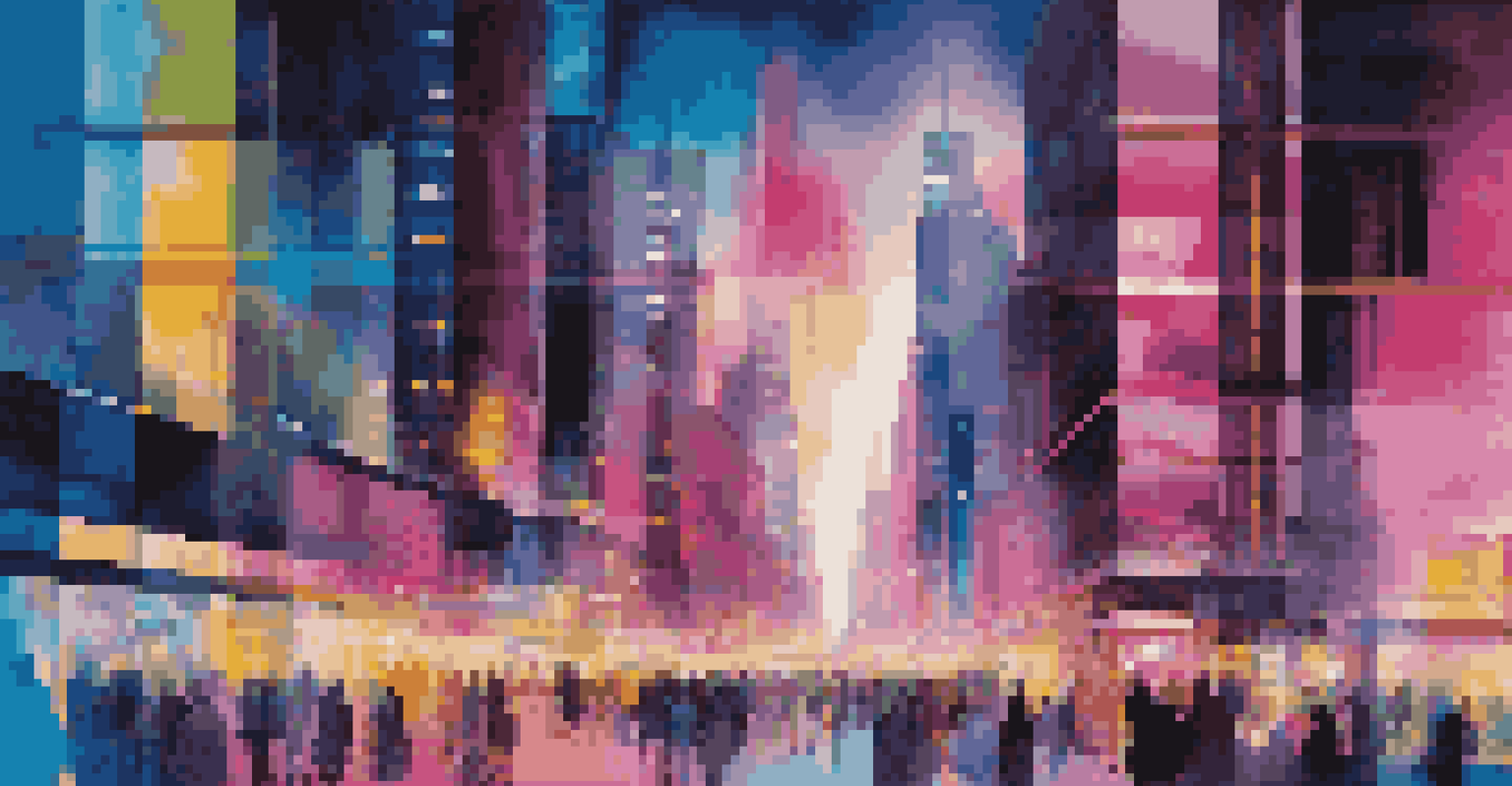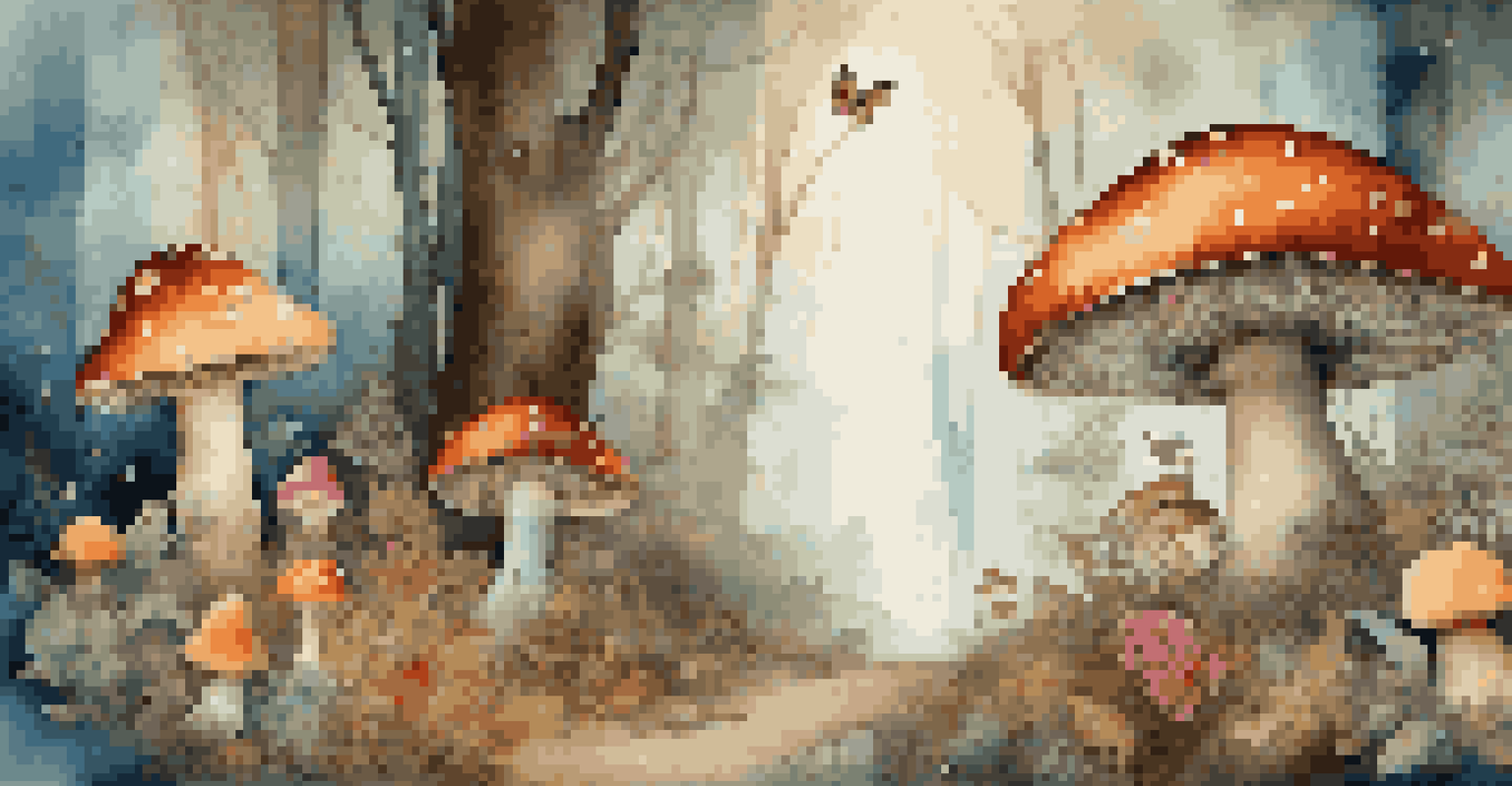The Rise of Digital Collage: Merging Images and Ideas Creatively

What is Digital Collage? A Brief Overview
Digital collage is an art form that combines various images and elements to create a new composition. Unlike traditional collage, which uses physical materials, digital collage relies on software tools to merge visuals seamlessly. This allows artists to experiment with layers, textures, and colors in a way that was previously unimaginable.
Collage is an art of the possibility of the combination of images, of the intersection of different worlds.
At its core, digital collage is about storytelling through visuals. Artists can weave together photographs, illustrations, and even text to convey a narrative or evoke emotions. It's akin to a modern-day tapestry, where each piece contributes to the overall picture.
The accessibility of digital tools has democratized art creation, inviting more people to explore their creative side. With just a computer or tablet, anyone can start creating stunning visuals, making digital collage a popular choice for both budding and seasoned artists.
The Historical Context of Collage
Collage has its roots in the early 20th century, with artists like Pablo Picasso and Georges Braque pioneering the technique. These innovators used paper and other materials to challenge traditional perceptions of art. Their work laid the groundwork for future generations to explore mixed media and collage techniques.

As the years went on, the concept of collage evolved, with artists incorporating various materials, including fabric and found objects. This continuous evolution has allowed collage to remain relevant, adapting to cultural changes and technological advancements. Digital collage is the latest chapter in this ongoing story.
Digital Collage: A Modern Art Form
Digital collage combines various visual elements to create new compositions, making art creation accessible to everyone.
The shift from physical to digital collage reflects broader changes in society, where technology influences how we express ourselves. Just as past artists responded to their environment, today's digital artists are using modern tools to create relevant and meaningful work.
The Tools Behind Digital Collage Creation
Creating a digital collage typically involves software like Adobe Photoshop, Canva, or Procreate. These platforms empower artists to manipulate images, apply filters, and experiment with layers, creating intricate designs with ease. Each tool offers unique features that cater to different skill levels and artistic styles.
Art is not freedom from discipline, but disciplined freedom.
Beyond just software, many artists utilize online resources such as stock photo libraries and graphic design websites to source their materials. This vast array of accessible assets enables endless creative possibilities, allowing artists to curate their collages from a diverse pool of visuals.
Moreover, the rise of mobile applications for collage-making has further enhanced accessibility. With apps designed for smartphones and tablets, anyone can create digital collages on the go, making art creation more spontaneous and fun.
The Creative Process: From Concept to Completion
Creating a digital collage often begins with a concept or theme that sparks the artist's interest. This could be anything from personal experiences to social issues or even abstract ideas. By centering the collage around a specific theme, artists can create a more cohesive and impactful piece.
Once the theme is established, artists gather their visual elements, which can include photographs, textures, and graphic elements. This process is similar to a puzzle, where they experiment with different arrangements until the composition feels just right. It's about finding balance and harmony in the chaos of visuals.
Social Media Boosts Artist Visibility
Platforms like Instagram and Pinterest have transformed how artists share their work, fostering community and collaboration.
Finally, the finishing touches are applied, often involving color correction, blending adjustments, and the addition of text or other design elements. This is where the magic happens, transforming a collection of images into a unified work of art that resonates with viewers.
The Impact of Social Media on Digital Collage
Social media platforms have played a pivotal role in the rise of digital collage as an art form. Sites like Instagram and Pinterest serve as both inspiration and showcase for artists, allowing them to share their work with a global audience. This visibility can lead to collaborations, commissions, and a sense of community among creators.
Additionally, social media algorithms often favor visually striking content, encouraging artists to push their creative boundaries. This competitive environment fosters innovation, prompting artists to experiment with styles and techniques to capture attention.
The interactive nature of social media also allows for immediate feedback, giving artists a sense of connection with their audience. This two-way communication can inspire further creativity and collaboration, making social media an integral part of the digital collage landscape.
Digital Collage in Contemporary Art and Culture
In today's art scene, digital collage is gaining recognition as a legitimate form of artistic expression. Many galleries and exhibitions now feature digital collage works, showcasing the versatility and depth this medium can offer. Artists are finding new ways to challenge norms and provoke thought through their digital compositions.
Moreover, digital collage has made its way into advertising, fashion, and music, influencing various aspects of contemporary culture. Brands often use collage techniques in their marketing campaigns to create eye-catching visuals that resonate with audiences. This integration showcases the medium's adaptability and relevance in modern society.
Future Innovations in Digital Collage
Emerging technologies like AR and AI are set to revolutionize digital collage, expanding creative possibilities for artists.
As digital collage continues to evolve, it reflects broader cultural shifts towards visual communication. In a world dominated by images, this art form speaks to our collective desire to share stories and ideas creatively, making it a vital part of today's artistic landscape.
The Future of Digital Collage: Trends and Innovations
Looking ahead, the future of digital collage appears bright, with emerging technologies like augmented reality (AR) and artificial intelligence (AI) poised to transform the medium. Artists are already experimenting with AR to create immersive experiences that blend the digital and physical worlds, allowing viewers to interact with their collages in exciting new ways.
AI tools are also beginning to play a role in the creative process, enabling artists to generate unique images or assist in design choices. While this raises questions about authorship and originality, it also opens up new avenues for creativity, allowing artists to explore uncharted territory.

As digital collage continues to grow in popularity, it's likely that we'll see even more innovative applications across various industries. From advertising to education, the potential for this art form to inspire and engage is limitless, making it an exciting field to watch in the coming years.